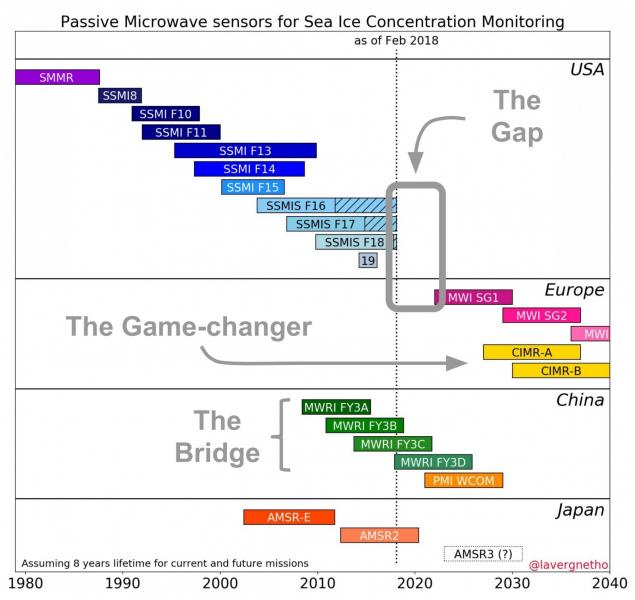In February 2018, for an invited post at the EGU Cryospheric Science blog, Thomas Lavergne discussed how the Copernicus Imaging Microwave Radiometer (CIMR) could be a game-changer for operational monitoring of sea-ice.
He wrote:
Before I tell you what makes CIMR so special, we need a short introduction on what passive microwave instruments are, why we like them for observing sea ice, and how they work:
T. Lavergne (2018) Passive Microwave Remote Sensing of Sea Ice : a crash-course in just four list items, Int. J. of Short Lists
The best satellite instruments for measuring sea ice use the microwave part of the electromagnetic spectrum (from ~1 to ~100 GHz). This type of radiation does not depend on Sun light, and is not blocked by clouds.
Passive microwave instruments record a tiny amount of radiation naturally emitted at the surface of the Earth and in the atmosphere. Aboard the satellite, the radiation is reflected by an antenna towards a recording instrument: the radiometer.
Radiometers can measure at several frequencies. Once the images are back at the processing centers on Earth, algorithms are applied to compute geophysical products such as sea ice concentration.
Radiometers with low frequencies (e.g. 6 GHz) yield best accuracy for sea ice concentration products. The bigger the antenna, the better the final resolution of the product.
One of a kind, the CIMR will focus on the low frequencies (6, 10, and 18 GHz), and fly an antenna big enough to ensure much better resolution than any of the passive microwave instruments we ever used before. This requires the antenna of CIMR to be substantially larger than that of SSMIS (60cm diameter), MWI (75cm) or even AMSR2 (2.1m)! The AMSR-E instrument and its follower AMSR2 were game-changers 15 years ago, and still offer the best resolution today… but future operational models and polar applications will require better sea ice products all too soon.
An exciting time opens for satellite-based observations of polar sea ice, as the pre-studies for CIMR are started by the European Space Agency this spring! Will industry take-up the challenge and build a big enough antenna for CIMR? Will CIMR be selected as EU’s future polar Copernicus mission? If “yes” to both, Europe will have a game-changer: high-resolution all-weather daily global accurate mapping of sea ice concentration.

- Log in to post comments
